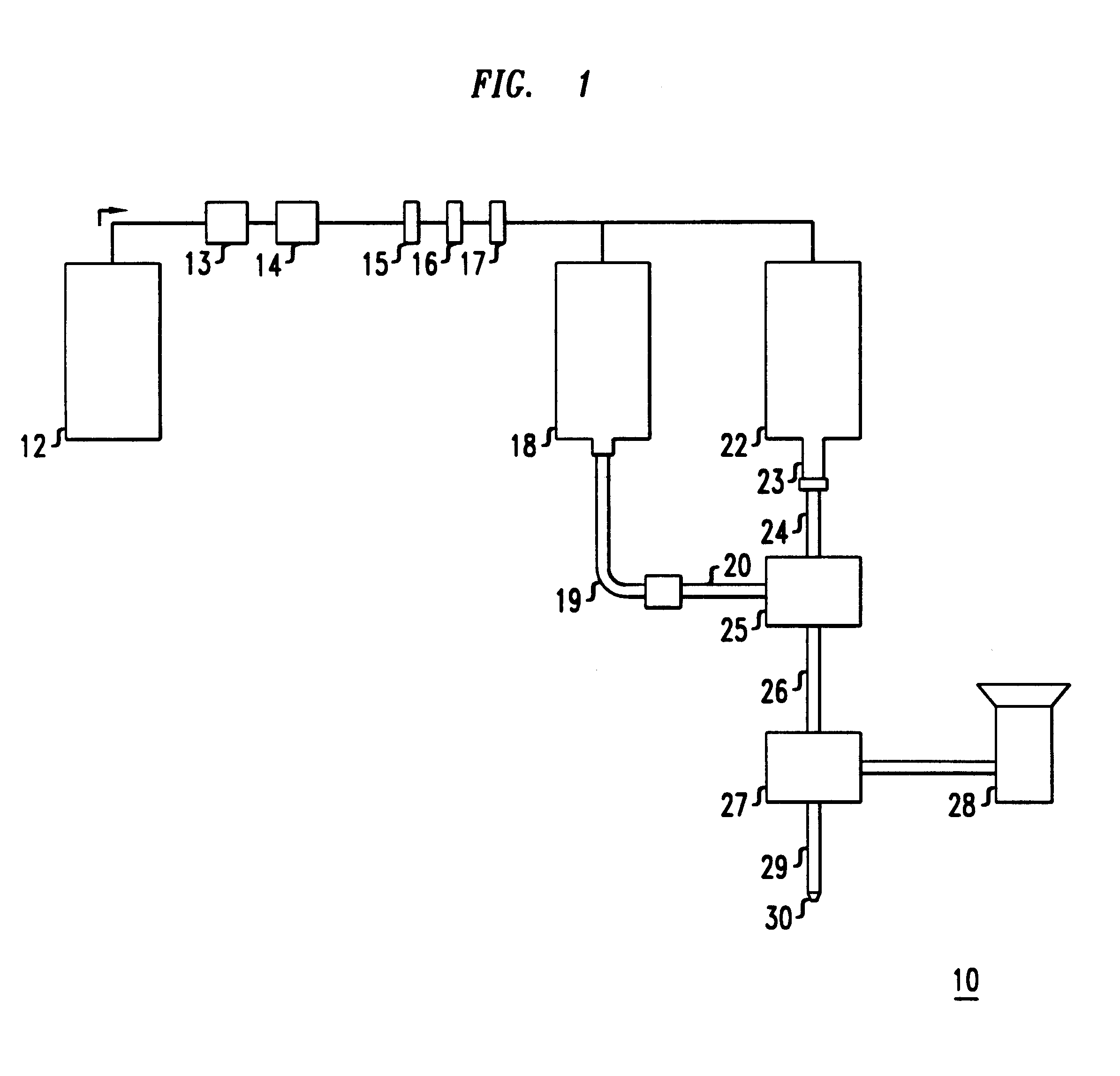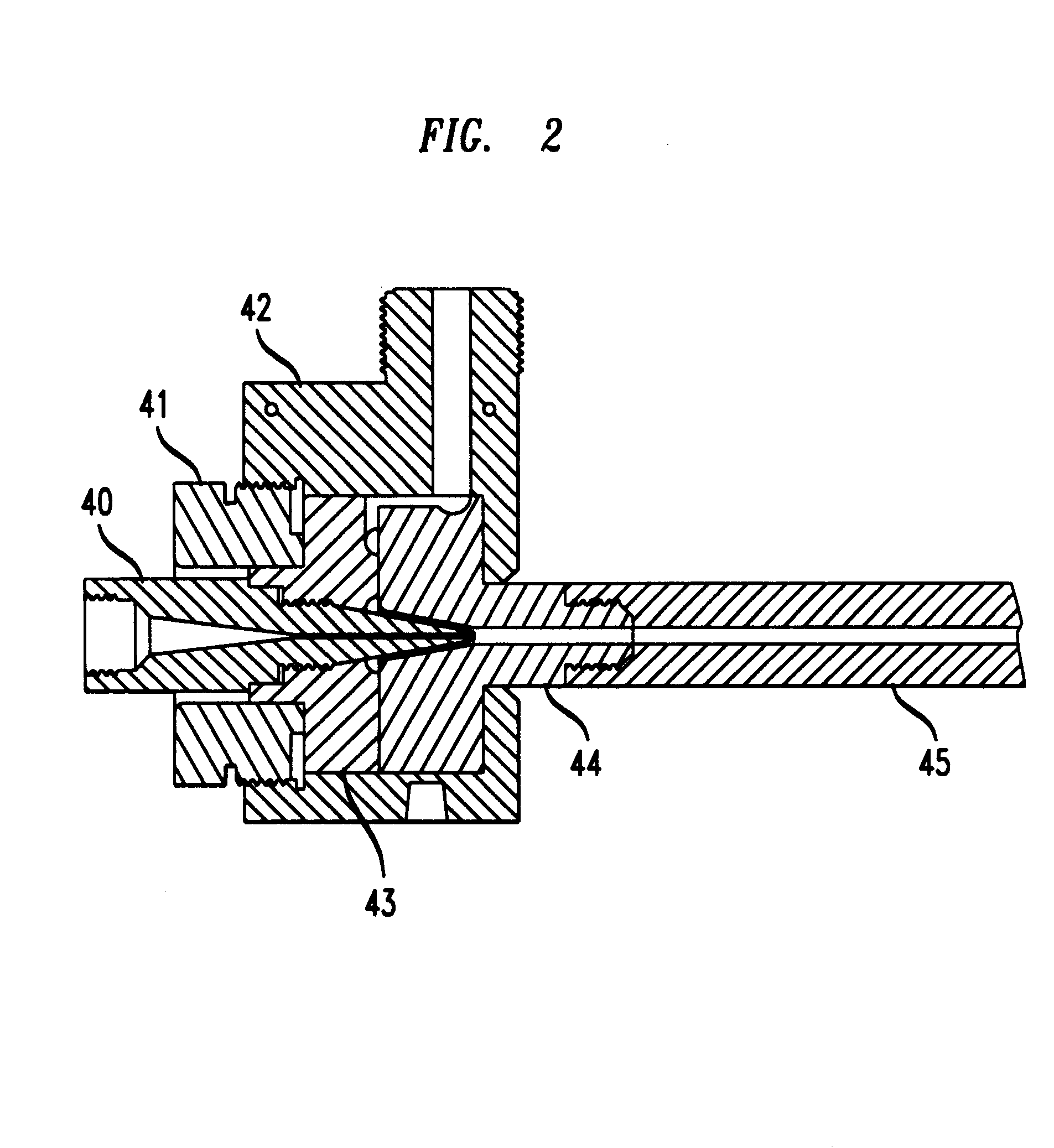Extrusion process for fabricating plastic optical fiber
a technology of extrusion and plastic, applied in the field of graded index plastic optical fiber fabrication, can solve the problems of insufficient use of optical fiber, insufficient cost effectiveness of glass optical fiber, and insufficient time consumption of optical fiber, etc., and achieve the effects of reducing production costs, reducing labor intensity, and reducing labor intensity
- Summary
- Abstract
- Description
- Claims
- Application Information
AI Technical Summary
Problems solved by technology
Method used
Image
Examples
Embodiment Construction
The apparatus set-up is similar to that illustrated in FIG. 1.
Gas pressure to the core and cladding reservoirs was provided by nitrogen gas, the nitrogen gas source at a pressure of about 2400 psi. Before reaching the reservoirs, the gas flowed through two high pressure regulators to control the pressure delivered to the reservoirs, and then through three filters--a 1 .mu.m filter, a 0.01 .mu.m filter, and another 1 .mu.m filter.
The cylindrical core reservoir, 24 inches in length with an inner diameter of 1.374 inches, was connected through a tapered adapter to a flow restrictor assembly, which in turn was connected through an adapter to a crosshead of the design shown in FIG. 2. The flow restrictor assembly consisted of the thermal homogenizer--a 3.97 inches long nickel tube having an inner diameter of 0.245 inches and the flow restrictor--a 5 inches long nickel tube having an inner diameter of 0.055 inches. The connections between the tubes and between the tubes and the adapters w...
PUM
| Property | Measurement | Unit |
|---|---|---|
| distance | aaaaa | aaaaa |
| inner diameter | aaaaa | aaaaa |
| temperature | aaaaa | aaaaa |
Abstract
Description
Claims
Application Information
 Login to View More
Login to View More - R&D
- Intellectual Property
- Life Sciences
- Materials
- Tech Scout
- Unparalleled Data Quality
- Higher Quality Content
- 60% Fewer Hallucinations
Browse by: Latest US Patents, China's latest patents, Technical Efficacy Thesaurus, Application Domain, Technology Topic, Popular Technical Reports.
© 2025 PatSnap. All rights reserved.Legal|Privacy policy|Modern Slavery Act Transparency Statement|Sitemap|About US| Contact US: help@patsnap.com



